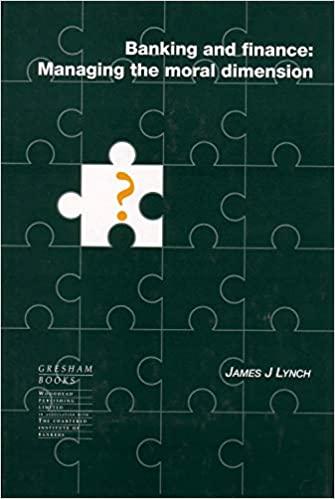Question
1. Risk and Rates of Return: Risk in Portfolio Context The capital asset pricing model (CAPM) explains how risk should be considered when stocks and
1. Risk and Rates of Return: Risk in Portfolio Context
The capital asset pricing model (CAPM) explains how risk should be considered when stocks and other assets are held -Select-by themselvesin portfoliosCorrect 1 of Item 1. The CAPM states that any stock's required rate of return is -Select-less thangreater thanequal toCorrect 2 of Item 1 the risk-free rate of return plus a risk premium that reflects only the risk remaining -Select-afterbeforeCorrect 3 of Item 1diversification. Most individuals hold stocks in portfolios. The risk of a stock held in a portfolio is typically -Select-equal tolower thanhigher thanCorrect 4 of Item 1 the stock's risk when it is held alone. Therefore, the risk and return of an individual stock should be analyzed in terms of how the security affects the risk and return of the portfolio in which it is held. The expected rate of return on a portfolio equals the weighted average of the expected returns on the assets held in the portfolio. A portfolio's risk-Select-isisn'tCorrect 5 of Item 1 calculated as the weighted average of the individual stocks' standard deviations; the portfolio's risk is generally -Select-largersmallerCorrect 6 of Item 1 because diversification -Select-raiseslowersCorrect 7 of Item 1 the portfolio's risk. Two important terms when discussing -Select-symmetrydiscountingdiversificationCorrect 8 of Item 1 are correlation and correlation coefficient. Correlation is the tendency of two variables to move together, while correlation coefficient is a measure of the degree of relationship between two variables. If a portfolio consists of two stocks that are perfectly-Select-positivelynegativelyCorrect 9 of Item 1 correlated then the portfolio is riskless because the stocks' returns move countercyclically to each other. If the returns of the stocks are perfectly -Select-positivelynegativelyCorrect 10 of Item 1 correlated then the stocks' returns would move up and down together and the portfolio would be exactly as risky as the individual stocks. In this situation, diversification would be completely -Select-usefuluselessCorrect 11 of Item 1 for reducing risk. In reality, most stocks are -Select-positivelynegativelyCorrect 12 of Item 1 correlated but not perfectly. So, combining stocks into portfolios reduces risk but does not completely eliminate it. This illustrates that -Select-symmetrydiscountingdiversificationCorrect 13 of Item 1 can reduce risk, but not completely eliminate risk. Portfolio risk can be broken down into two types. -Select-SystematicDiversifiableMarketCorrect 14 of Item 1 risk is that part of a security's risk associated with random events. It can be eliminated by proper diversification and is also known as company-specific risk. On the other hand, -Select-unystematicdiversifiablemarketCorrect 15 of Item 1 risk is the risk that remains in a portfolio after diversification has eliminated all company-specific risk. Standard deviation is not a good measure of risk when a stock is held in a portfolio. A stock's relevant risk is the risk that remains once a stock is in a diversified portfolio. Its contribution to the portfolio's market risk is measured by a stock's-Select-correlation coefficientrisk premiumbeta coefficientCorrect 16 of Item 1, which shows the extent to which a given stock's returns move up and down with the stock market. An average stock's beta is-Select-less thanequal togreater thanCorrect 17 of Item 1 1 because an average-risk stock is one that tends to move up and down in step with the general market. A stock with a beta -Select-less thanequal togreater thanCorrect 18 of Item 1 1 is considered to have high risk, while a stock with beta -Select-less thanequal togreater thanCorrect 19 of Item 1 1 is considered to have low risk.
Quantitative Problem: You are holding a portfolio with the following investments and betas:
| Stock | Dollar investment | Beta | ||
| A | $250,000 | 1.30 | ||
| B | 200,000 | 1.70 | ||
| C | 300,000 | 0.75 | ||
| D | 250,000 | -0.15 | ||
| Total investment | $1,000,000 | |||
The market's required return is 9% and the risk-free rate is 3%. What is the portfolio's required return? Do not round intermediate calculations. Round your answer to three decimal places.
%
Step by Step Solution
There are 3 Steps involved in it
Step: 1

Get Instant Access to Expert-Tailored Solutions
See step-by-step solutions with expert insights and AI powered tools for academic success
Step: 2

Step: 3

Ace Your Homework with AI
Get the answers you need in no time with our AI-driven, step-by-step assistance
Get Started


